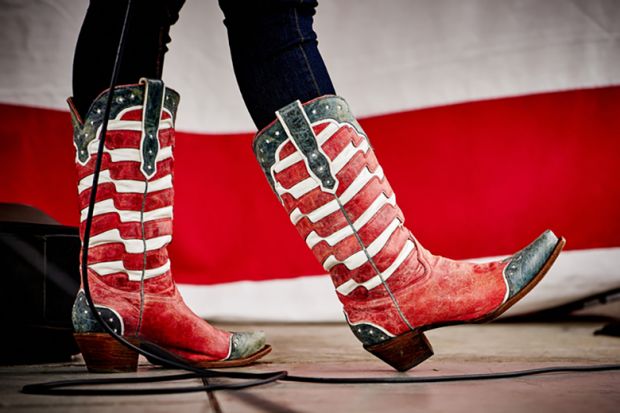Bloom where you are planted. When a scholar from “back East” finds herself “out West”, she has few other options. So when Marie Dallam spotted a newspaper ad for a “Cowboy Church” in her new home of Oklahoma, she directed her skills as a historian of American religion to this cultural peculiarity.
Apparently, Dallam’s native Pennsylvania did not have cowboys. Why else would she feel the need to clarify that “cow, in this sense, is an umbrella term, used for bulls and cows of all types”? Reading that, I laughed so hard I spat out my Texan tea.
Dallam readily admits that she brings no former knowledge of cowboys, rodeos and country music, or even a cursory understanding of rural life on the Plains. More than once, she acknowledges anxiety and discomfort walking into religious services or even watching rodeos. While objectivity may be laudable, some previous knowledge of the subject at hand is usually desirable. Dallam’s analytical approach extends only to description, comparison with entities already known and categorisation.
As a newcomer to this world, she has a keen eye, and nose, for cultural signs and signals of otherness. For Dallam, “Cowboy Christians” make up a distinctive movement that draws on cowboy culture, on “muscular Christianity” groups such as The Promise Keepers and on “the 1960s-1970s Jesus movement”. She places cowboy Christians alongside other “new paradigm churches” where doctrine and denomination have little importance. Instead, Cowboy Churches, she argues, break down “behavioural boundaries” between members and non-members, and pastors are rarely theologically trained.
Dallam attempts to locate “cowboy values” among the few remaining ranch hands, urban cowboys, cowboy preachers, rodeo professionals and racetrack chaplains. However, her limited information comes from interviews with pastors and church leaders who seem to have an investment in a fragmentation that leaves each with a unique claim to authenticity.
Questions of authenticity run through the book. Are urban cowboys proper cowboys? Can preachers who don’t know how to brand cattle be “cowboy preachers”? Should bikers be welcome in Cowboy Churches? Does learning rodeo skills at college turn you into a cowboy?
While she correctly aligns the gender normativity of Cowboy Churches with conservative Christianity, Dallam fails to offer a socio-political analysis. Incorporating interviews with church members could have revealed similarities of class, theology and social attitudes. For example, as one pastor explains, some believe the Baptist church has become too middle class and that the Cowboy Church offers a place for those economically “left behind”. This is a theological dog whistle and an indicator of contemporary American populism.
Delving deeper into questions about class, the dynamics of authenticity, theology and politics might hitch these peculiar ponies closer to familiar cultural fence posts. That’s a tall order for a newcomer such as Dallam. Her research provides the reader with fascinating narratives of the rural heartlands. But her lens, or her own fear of the other, prevents her from spotting some of the threads sewing Cowboy Christians into American politics and religion.
Angelia Wilson is professor of politics at the University of Manchester.
Cowboy Christians
By Marie W. Dallam
Oxford University Press, 248pp, £22.99
ISBN 9780190856564
Published 29 March 2018
POSTSCRIPT:
Print headline: Left behind in the mild west
Register to continue
Why register?
- Registration is free and only takes a moment
- Once registered, you can read 3 articles a month
- Sign up for our newsletter
Subscribe
Or subscribe for unlimited access to:
- Unlimited access to news, views, insights & reviews
- Digital editions
- Digital access to THE’s university and college rankings analysis
Already registered or a current subscriber? Login








